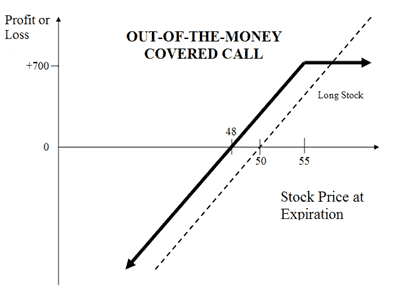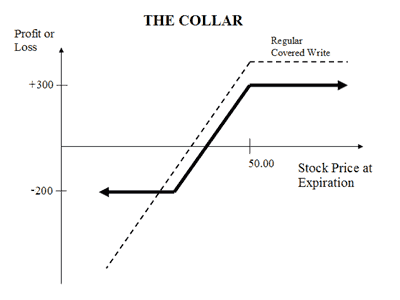 Zerodha (Trading & Demat Account)
Zerodha (Trading & Demat Account)
FREE Equity Delivery and MF
Flat ₹20/trade Intra-day/F&O
 Zerodha (Trading & Demat Account)
Zerodha (Trading & Demat Account)
FREE Equity Delivery and MF
Flat ₹20/trade Intra-day/F&O

|
|
Compare Covered Call and Collar options trading strategies. Find similarities and differences between Covered Call and Collar strategies. Find the best options trading strategy for your trading needs.
| Covered Call | Collar | |
|---|---|---|
 |
 |
|
| About Strategy | A Covered Call is a basic option trading strategy frequently used by traders to protect their huge share holdings. It is a strategy in which you own shares of a company and Sell OTM Call Option of the company in similar proportion. The Call Option would not get exercised unless the stock price increases. Till then you will earn the Premium. This a unlimited risk and limited reward strategy. Let's assume you own TCS Shares and your view is that its price will rise in the near future. You will Sell OTM Call Option of TCS at a price, where you target to sell your shares. You will receive premium amount for selling the Call option and the premium is your income. | A Collar is similar to Covered Call but involves another position of buying a Put Option to cover the fall in the price of the underlying. It involves buying an ATM Put Option & selling an OTM Call Option of the underlying asset. It is a low risk strategy since the Put Option minimizes the downside risk. However, the rewards are also limited and is perfect for conservatively Bullish market view. Suppose you are holding shares of SBI currently trading at Rs 250. You can deploy a collar strategy by selling a Call Option of strike price Rs 300 while at the same time purchasing a Rs 200 strike price Put option. If the price rises to Rs 300, your benefit from increase in value of your holdings and you will lose net premiums. If the price falls... Read More |
| Market View | Bullish | Bullish |
| Strategy Level | Advance | Advance |
| Options Type | Call + Underlying | Call + Put + Underlying |
| Number of Positions | 2 | 3 |
| Risk Profile | Unlimited | Limited |
| Reward Profile | Limited | Limited |
| Breakeven Point | Purchase Price of Underlying- Premium Recieved | Price of Features - Call Premium + Put Premium |
| Covered Call | Collar | |
|---|---|---|
| When to use? | The covered call option strategy works well when you have a mildly Bullish market view and you expect the price of your holdings to moderately rise in future. |
The Collar strategy is perfect if you're Bullish for the underlying you're holding but are concerned with risk and want to protect your losses. |
| Market View | Bullish When you are expecting a moderate rise in the price of the underlying or less volatility. |
Bullish When you are of the view that the price of the underlying will move up but also want to protect the downside. |
| Action |
Let's assume you own TCS Shares and your view is that its price will rise in the near future. You will Sell OTM Call Option of TCS at a price, where you target to sell your shares. You will receive premium amount for selling the Call option and the premium is your income. |
|
| Breakeven Point | Purchase Price of Underlying- Premium Recieved |
Price of Features - Call Premium + Put Premium |
| Covered Call | Collar | |
|---|---|---|
| Risks | Unlimited Maximum loss is unlimited and depends on by how much the price of the underlying falls. Loss happens when price of underlying goes below the purchase price of underlying. Loss = (Purchase Price of Underlying - Price of Underlying) + Premium Received |
Limited You will incur maximum losses when price of the underlying is less than the strike price of the Put Option. Max Loss = Purchase Price of Underlying - Strike Price of Long Put - Net Premium Received |
| Rewards | Limited You earn premium for selling a call. Maximum profit happens when purchase price of underlying moves above the strike price of Call Option. Max Profit= [Call Strike Price - Stock Price Paid] + Premium Received |
Limited You will incur maximum profit when price of underlying is greater than the strike price of call option. Max Profit = Strike Price of Short Call - Purchase Price of Underlying + Net Premium Received |
| Maximum Profit Scenario | Underlying rises to the level of the higher strike or above. |
Underlying goes up and Call option exercised |
| Maximum Loss Scenario | Underlying below the premium received |
Underlying goes down and Put option exercised |
| Covered Call | Collar | |
|---|---|---|
| Advantages | It helps you generate income from your holdings. Also allows you to benefit from 3 movements of your stocks: rise, sidewise and marginal fall. |
It protects the losses on underlying asset. |
| Disadvantage | Unlimited risk for limited reward. |
The profit is limited |
| Simillar Strategies | Bull Call Spread | Covered Put Bull, Call Spread, Bull Put Spread |

Add a public comment...

FREE Intraday Trading (Eq, F&O)
Flat ₹20 Per Trade in F&O
|
|